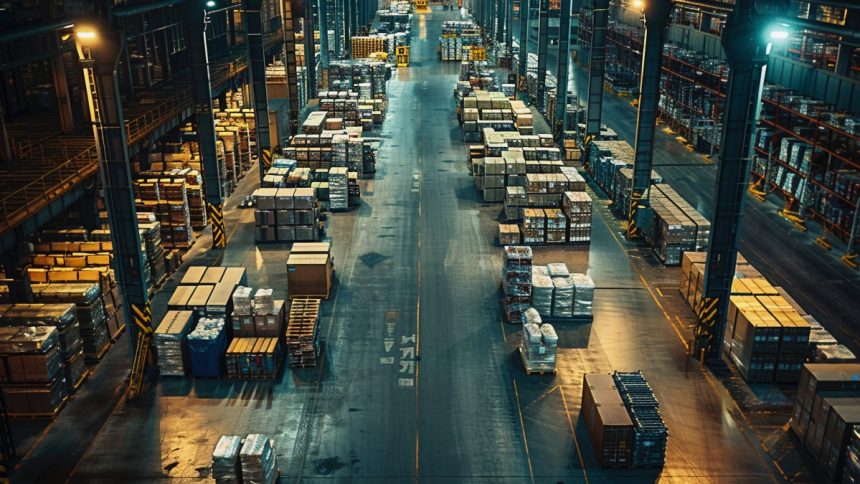How did Indiana become a central logistics hub in the United States? This transformation is rooted in its strategic location, robust infrastructure, and continuous innovation. Indiana is within a one-day drive of 80% of the US population, making it an ideal location for logistics operations.
The state’s extensive network of highways, railroads, and intermodal facilities has attracted major companies like Amazon and FedEx. Let’s take a look at what has shaped Indiana’s logistics industry of today, and turned it into a national powerhouse.
Historical Background
Indiana’s logistics industry has its roots in the 19th century when the state became a crucial junction for the burgeoning railroad network. By the mid-1800s, Indiana hosted several major rail lines, facilitating the movement of goods across the Midwest and to other parts of the United States.
The completion of the National Road, one of the first major highways in the US, further enhanced Indiana’s role as a transportation hub. This road, stretching from Maryland to Illinois, passed through Indiana and became a vital route for the movement of goods and people, solidifying the state’s logistical significance.
The development of the interstate highway system in the mid-20th century marked another pivotal moment for Indiana’s logistics sector. Key highways, including I-65, I-70, I-74, and I-69, intersect the state, providing direct routes to major markets such as Chicago, Detroit, and Cincinnati. The state’s extensive infrastructure, combined with its strategic location, has positioned Indiana as a central logistics hub, supporting a robust and dynamic economy.
Current Trends
Indiana’s logistics sector is experiencing significant growth, driven largely by the e-commerce boom. As online shopping continues to surge, the demand for warehousing and distribution centers has skyrocketed. Companies like Amazon, Walmart, and FedEx have established substantial operations in Indiana, attracted by its strategic location. Amazon alone operates multiple fulfillment centers across the state, employing thousands of workers and handling millions of packages annually.
Intermodal transportation is another key trend shaping Indiana’s logistics. The state’s ability to integrate rail, road, and air transportation enhances efficiency and reduces costs for businesses. Indiana is home to several major intermodal facilities, such as the Avon Yard near Indianapolis, one of the largest rail yards in the Midwest, and the Indianapolis International Airport, a critical cargo hub.
These facilities enable seamless transitions between different transportation modes, facilitating the swift movement of goods. The state’s investment in infrastructure, including recent upgrades to highways and railroads, supports the continued growth and efficiency of its logistics operations.
Road Safety
Ensuring road safety is a paramount concern for Indiana’s logistics industry, with numerous initiatives aimed at protecting drivers and reducing accidents. Comprehensive driver training programs are a cornerstone of these efforts, emphasizing safe driving practices, defensive driving techniques, and adherence to regulations.
The Indiana Motor Truck Association (IMTA) collaborates with logistics companies to provide specialized training sessions, which have been shown to reduce accident rates significantly. Despite these efforts, road accidents involving trucks are some of the most lethal ones. In such unfortunate events, it can be very important to hire a semi-truck accident attorney to navigate the complexities of legal claims and ensure proper representation.
Advanced safety technologies are also playing a significant role in enhancing road safety within Indiana’s logistics sector. The adoption of collision avoidance systems, lane departure warnings, and electronic logging devices (ELDs) is becoming increasingly widespread.
ELDs ensure compliance with hours-of-service regulations, preventing driver fatigue—a major cause of accidents. Indiana’s investment in maintaining and expanding its road infrastructure, including highways and bridges, also supports safer logistics operations by ensuring that transportation routes are well-maintained and capable of handling high volumes of freight traffic.
New Technology
Indiana’s logistics sector is at the forefront of adopting new technologies, significantly enhancing operational efficiency and reliability. Autonomous vehicles, including self-driving trucks and delivery drones, are being developed and tested within the state. Companies such as Cummins and Tesla are investing in autonomous truck technology, aiming to reduce transportation costs and improve safety.
Smart warehousing is another technological advancement revolutionizing Indiana’s logistics industry. Advanced warehouse management systems (WMS) that utilize artificial intelligence and machine learning are becoming increasingly prevalent. These systems optimize inventory management, reduce errors, and improve order fulfillment times.
For instance, the implementation of AI-driven WMS has been shown to enhance picking accuracy and reduce labor costs. The use of real-time data analytics provides valuable insights into logistics operations, enabling companies to make informed decisions and further streamline their processes.
Sustainability Efforts
Indiana’s logistics industry is increasingly prioritizing sustainability, implementing measures to reduce its environmental footprint. Green infrastructure investments are a key component of these efforts, with many logistics facilities adopting LEED certification standards.
The LEED-certified distribution center operated by Walmart in Plainfield features energy-efficient lighting, water conservation systems, and renewable energy sources, resulting in a significant reduction in energy use. These eco-friendly designs lower operational costs and align with broader environmental goals, helping to mitigate climate change impacts.
The shift towards alternative fuels is another significant aspect of Indiana’s sustainability strategy. Logistics companies are transitioning to compressed natural gas (CNG) and electric vehicles to reduce greenhouse gas emissions. Programs promoting recycling and waste reduction are being implemented across the industry. Companies are adopting circular economy principles, where materials are reused and recycled, minimizing waste.
Future Trends
The adoption of automated guided vehicles (AGVs) and robotic sorting systems in warehouses is accelerating, with companies investing heavily in these technologies. The use of industrial robots in logistics has increased greatly in recent years. These advancements enable faster and more accurate handling of goods, meeting the growing demands of e-commerce and enhancing overall productivity.
Sustainability initiatives are also gaining traction in Indiana’s logistics industry. With a focus on reducing carbon emissions and promoting environmental stewardship, companies are adopting greener practices. The state is seeing a rise in the use of electric and hybrid vehicles for transportation, supported by incentives for green technology adoption.
Indiana is investing in renewable energy sources for its logistics operations, with several warehouses now equipped with solar panels. These efforts align with broader industry trends, as sustainability is becoming a critical factor for logistics companies
Conclusion
What makes Indiana a central logistics hub in the United States? The answer lies in a combination of historical significance, strategic investments, and forward-thinking initiatives. Indiana’s logistics industry has evolved from 19th-century railroads and the National Road to today’s advanced intermodal facilities and digital technologies.
With continuous advancements in automation, sustainability, and road safety, Indiana is well-positioned for the future. As the state embraces new technologies and sustainable practices, its logistics sector will continue to thrive, maintaining its pivotal role in the national and global supply chain.
Lynn Martelli is an editor at Readability. She received her MFA in Creative Writing from Antioch University and has worked as an editor for over 10 years. Lynn has edited a wide variety of books, including fiction, non-fiction, memoirs, and more. In her free time, Lynn enjoys reading, writing, and spending time with her family and friends.















